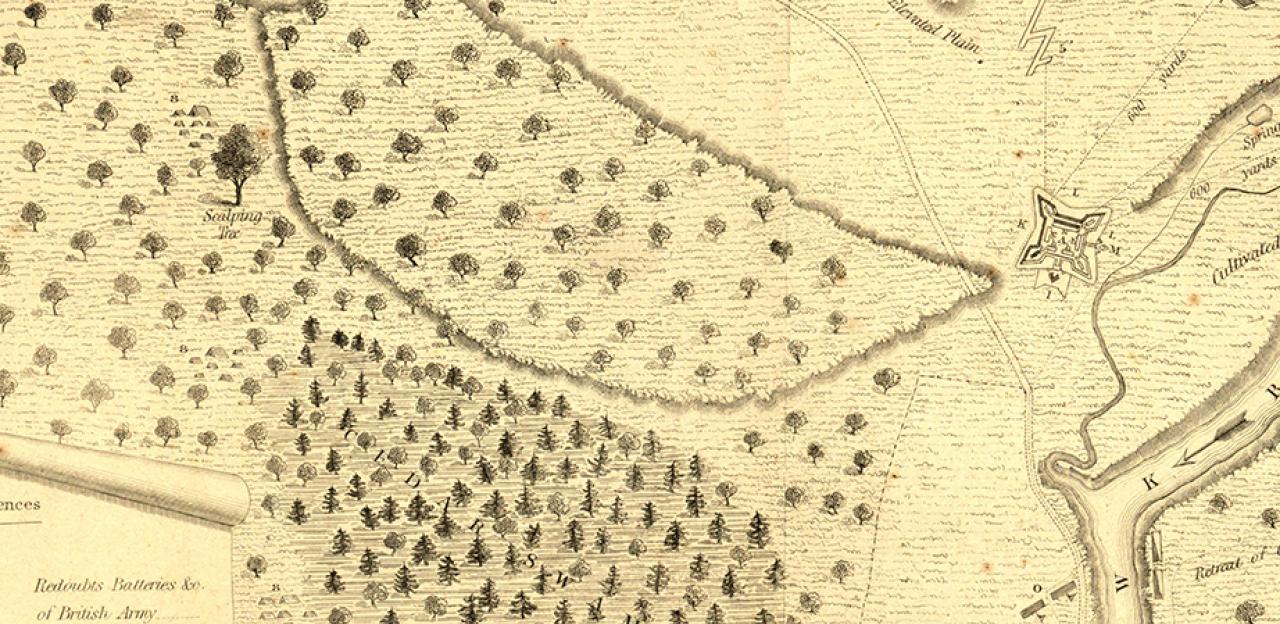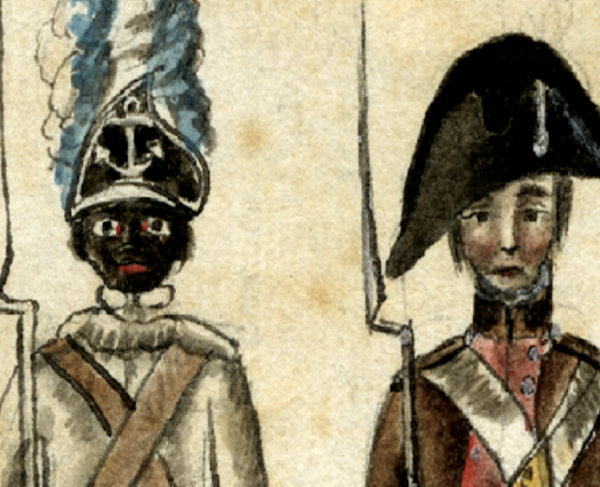Fort Stanwix

Fort Stanwix, completed in 1762, guarded a critical portage point on the Mohawk River. The fort was constructed of earth and timber, with seventeen-foot walls and four bastions. A dry moat surrounded the walls. After the French and Indian War ended the following year, the fort was abandoned and fell into disrepair.
With the outbreak of the American Revolution, American forces rebuilt and reoccupied the fort in 1776. Fort Stanwix played a critical role in the Saratoga Campaign of 1777. The fort became a critical target for General John Burgoyne, who sent General Barry St. Leger and a motley force of British, Hessians, Canadians, Loyalists, and natives to capture it. Opposing St. Leger was the 3rd New York Regiment under Col. Peter Gansevoort.
St. Leger arrived at the fort on Aug. 2, 1777 and demanded that Gansevoort surrender. Gansevoort refused and both sides settled in for a siege. On August 6th, six miles from the fort, where the road crossed the steeply embanked Oriskany Creek, the British ambushed American General Nicholas Herkimer’s relief column. The savage ambush left over half of Herkimer’s 800 men killed or wounded compared to 70 British and native casualties. Herkimer himself was severely wounded in the leg and would die 10 days later, but after being hit had himself propped up against a tree, lit his pipe and continued to direct his troops.
While a major tactical victory for the British, the Battle of Oriskany would help turn the tide of the entire Saratoga campaign in favor of the Americans. To assist Herkimer’s threatened, battered column, Gansevoort sent a sortie of 250 men from the fort. They looted the now-vacant British and native camps along the way. Hearing that their camp was being looted, Brandt’s natives broke off their attack on Herkimer, forcing the British to withdraw as well. The destruction and looting of their camp, combined with their losses in the battle, greatly damaged the relationship between St. Leger and his native allies.
On August 12, American General Benedict Arnold led another column towards Stanwix. Arnold had only 700 men, but was within striking distance of St. Leger by Aug. 20. Instead of engaging St. Leger directly, Arnold used disinformation to undermine British morale. Fearing that Arnold was marching on his lines rapidly with 3,000 men, and with growing discontent among his native allies, St. Leger abandoned the siege on August 22nd.
Instead of capturing the critical Mohawk valley, St. Leger would have to retrace his steps to come to the aid of Burgoyne, whose entire force of 5,800 men was hemmed in by the American forces at Saratoga. St. Leger did not arrive in time; on October 17, 1777, Burgoyne was forced to surrender his entire army, forever changing the course of the American Revolution.
Related Battles
34
66


